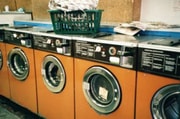Nutritionist exposes flaws in health star rating and questions food safety for kids
By
Gian T
- Replies 0
When you’re standing in the supermarket aisle, squinting at the front of a muesli bar box or a bag of 'healthy' snacks, it’s easy to feel reassured by those shiny Health Star Ratings (HSR) plastered across the packaging.
Four stars? Five stars? Must be a good choice for the grandkids, right? Well, not so fast.
Leading Australian pediatric nutritionist Mandy Sacher is sounding the alarm on the Health Star Rating system, and her findings might just have you rethinking what you pop into your trolley.
According to Mandy Sacher, the HSR system—designed to help us make healthier choices—may actually be giving a 'health halo' to foods that are anything but nutritious, especially for our little ones.
That’s a far cry from the wholesome image those stars suggest.
How is this possible? Under the current HSR rules, products can rack up stars by adding isolated proteins or synthetic fibres, regardless of how processed or artificial the rest of the ingredients are.
There’s no penalty for including artificial additives, refined starches, or emulsifiers—ingredients that mounting research suggests could be harmful, especially to developing bodies and brains.
Sacher argues that the HSR system is 'a ticking public health time bomb,' likening it to the asbestos scandal in terms of its potential long-term impact.
She said, 'Products full of additives, synthetic fibres, emulsifiers, artificial sweeteners and industrial seed oils are scoring 4 or 5 stars, yet emerging evidence links these ingredients to ADHD, gut damage, insulin resistance, anxiety, depression and even cancer.'
It’s not just a handful of products, either. Many muesli bars and snacks—some with three, four, or even five stars—are highly processed and engineered to override our natural sense of fullness, encouraging overeating.
Sacher points out that the HSR system completely ignores the internationally recognised NOVA scale, which classifies foods based on their level of processing.
In fact, she says, 'Often, the higher the rating, the more processed the product. That’s not just confusing—it’s dangerous.'
With only 32 per cent of products displaying the HSR and no independent watchdog or penalties for misleading ratings, Sacher believes families are 'flying blind' when it comes to making healthy choices.
Even a government review in 2019 flagged these serious flaws, but, as Sacher notes, 'Six years later, nothing has changed.'
The problem, she says, is both in how the rating is calculated and how it’s communicated.
The HSR focuses on a handful of nutrients—sugar, salt, and added fibre—while ignoring the bigger picture: how processed the food is and what it’s actually made from.
'Stars appear on the front of packs as a government-endorsed health symbol. Parents assume a 4-star snack is a good choice—but those stars can be manipulated by adding synthetic fibre or lab-made vitamins, even if the product is ultra-processed.'
Sacher is particularly concerned about the rise in childhood illnesses like hypertension, anxiety, depression, fatty liver, and type 2 diabetes—conditions once rare in children.
She believes the HSR system is partly to blame, rewarding 'nutrient manipulation, not food integrity.'
She gives a striking example: 'If 100 per cent walnuts can’t get 5 stars, but kids’ lollies can, we need to admit the system is broken.'
The Department of Health, Disability and Ageing defends the HSR, saying it’s designed to help shoppers compare similar packaged foods quickly and easily.
The system uses an algorithm developed with Food Standards Australia New Zealand (FSANZ) and other experts, balancing positive nutrients with those linked to chronic disease risk. But even they admit:
'A high HSR does not mean that the food or beverage provides all of the essential nutrients required for a balanced and healthy diet or that the product should be eaten in large quantities, or often.'
FSANZ adds that all food additives must undergo a safety assessment before being permitted for use, and must be clearly labelled.
However, the system doesn’t consider the cumulative effects of eating many processed foods, nor does it account for the latest research on ultra-processed ingredients.
Frustrated by the shortcomings of the HSR, Sacher has launched her own 'Real Food Rating' system, which scores foods based on how they’re made, not just their nutrient content.
She’s calling on the government to collaborate with independent, science-led systems like hers, which she says better reflect what families actually care about.
'In my opinion, if we keep rewarding fake food and penalising real food, we’re not just misleading consumers—we’re fuelling a preventable health crisis,' Sacher warns.

Have you ever been misled by a Health Star Rating? Do you check the ingredients list, or do you trust the stars? What changes would you like to see in how our food is labelled? Share your thoughts and experiences in the comments below.
Read more: Could your favourite snack be causing more deaths than fentanyl? Study reveals shocking truth
Four stars? Five stars? Must be a good choice for the grandkids, right? Well, not so fast.
Leading Australian pediatric nutritionist Mandy Sacher is sounding the alarm on the Health Star Rating system, and her findings might just have you rethinking what you pop into your trolley.
According to Mandy Sacher, the HSR system—designed to help us make healthier choices—may actually be giving a 'health halo' to foods that are anything but nutritious, especially for our little ones.
Sacher’s concerns are not just about a few extra grams of sugar or salt. She pointed out that many popular foods, including those marketed directly to children and boasting high HSRs, are packed with additives and chemicals linked to ADHD, gut damage, cancer, and even addictive eating behaviours.That’s a far cry from the wholesome image those stars suggest.
How is this possible? Under the current HSR rules, products can rack up stars by adding isolated proteins or synthetic fibres, regardless of how processed or artificial the rest of the ingredients are.
There’s no penalty for including artificial additives, refined starches, or emulsifiers—ingredients that mounting research suggests could be harmful, especially to developing bodies and brains.
Sacher argues that the HSR system is 'a ticking public health time bomb,' likening it to the asbestos scandal in terms of its potential long-term impact.
She said, 'Products full of additives, synthetic fibres, emulsifiers, artificial sweeteners and industrial seed oils are scoring 4 or 5 stars, yet emerging evidence links these ingredients to ADHD, gut damage, insulin resistance, anxiety, depression and even cancer.'
It’s not just a handful of products, either. Many muesli bars and snacks—some with three, four, or even five stars—are highly processed and engineered to override our natural sense of fullness, encouraging overeating.
Sacher points out that the HSR system completely ignores the internationally recognised NOVA scale, which classifies foods based on their level of processing.
In fact, she says, 'Often, the higher the rating, the more processed the product. That’s not just confusing—it’s dangerous.'
With only 32 per cent of products displaying the HSR and no independent watchdog or penalties for misleading ratings, Sacher believes families are 'flying blind' when it comes to making healthy choices.
Even a government review in 2019 flagged these serious flaws, but, as Sacher notes, 'Six years later, nothing has changed.'
The problem, she says, is both in how the rating is calculated and how it’s communicated.
The HSR focuses on a handful of nutrients—sugar, salt, and added fibre—while ignoring the bigger picture: how processed the food is and what it’s actually made from.
'Stars appear on the front of packs as a government-endorsed health symbol. Parents assume a 4-star snack is a good choice—but those stars can be manipulated by adding synthetic fibre or lab-made vitamins, even if the product is ultra-processed.'
Sacher is particularly concerned about the rise in childhood illnesses like hypertension, anxiety, depression, fatty liver, and type 2 diabetes—conditions once rare in children.
She believes the HSR system is partly to blame, rewarding 'nutrient manipulation, not food integrity.'
She gives a striking example: 'If 100 per cent walnuts can’t get 5 stars, but kids’ lollies can, we need to admit the system is broken.'
The Department of Health, Disability and Ageing defends the HSR, saying it’s designed to help shoppers compare similar packaged foods quickly and easily.
The system uses an algorithm developed with Food Standards Australia New Zealand (FSANZ) and other experts, balancing positive nutrients with those linked to chronic disease risk. But even they admit:
'A high HSR does not mean that the food or beverage provides all of the essential nutrients required for a balanced and healthy diet or that the product should be eaten in large quantities, or often.'
However, the system doesn’t consider the cumulative effects of eating many processed foods, nor does it account for the latest research on ultra-processed ingredients.
Frustrated by the shortcomings of the HSR, Sacher has launched her own 'Real Food Rating' system, which scores foods based on how they’re made, not just their nutrient content.
She’s calling on the government to collaborate with independent, science-led systems like hers, which she says better reflect what families actually care about.
'In my opinion, if we keep rewarding fake food and penalising real food, we’re not just misleading consumers—we’re fuelling a preventable health crisis,' Sacher warns.
Key Takeaways
- Leading paediatric nutritionist Mandy Sacher has criticised Australia’s Health Star Rating system, saying it gives high scores to ultra-processed foods full of additives linked to ADHD, gut damage, cancer, and other health issues.
- The current Health Star Rating algorithm allows products to gain extra stars by adding isolated protein or synthetic fibre, without penalising for using artificial additives, refined starches, or emulsifiers.
- Ms Sacher has launched an alternative called The Real Food Rating, urging the government to support science-based, independent systems that prioritise ingredient quality and degree of processing over just nutrient content.
- The Department of Health and FSANZ maintain that the HSR is intended as a simple comparison tool for similar food categories and that all permitted food additives are subject to safety assessments and strict regulations.
Read more: Could your favourite snack be causing more deaths than fentanyl? Study reveals shocking truth








